10 Lemur Facts: A Look at These Endangered Animals
This list of lemur facts contains valuable information about lemurs, a primate species found only on the island of Madagascar.
One of the most notable lemur facts is their status as the most endangered mammal, requiring extensive conservation efforts and public awareness. Unlike other primate groups, lemurs live in a matriarchal society. Lastly, the word lemur comes from Latin, meaning ghosts of the night. If you want more information about lemur behavior and social structure, scroll down for the rest of the article.
For more from the primate world, check out these monkey facts about the lemur's relative, monkeys!
10 Lemur Facts
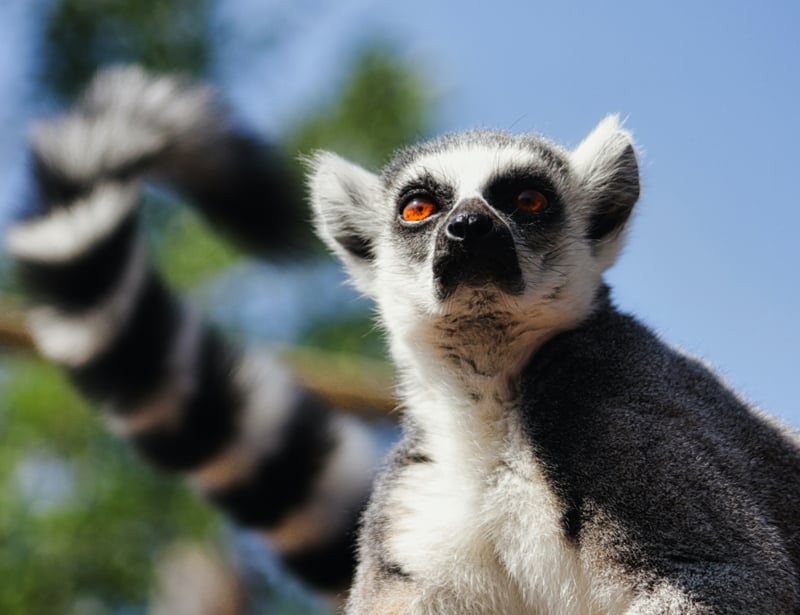
1. Lemurs live only in Madagascar.
If you want to find lemurs in the wild, go to Madagascar, an island in the Indian Ocean and their only natural habitat. Most lemurs inhabit tropical rainforests on the isolated island. They have also thrived without competition from other primates, resulting in more than 100 lemur species.
In addition, modern lemurs evolved to the conditions of different island sections a few million years ago, making them the world's oldest living primates8. Scientists have theorized that lemurs rafted across the Indian Ocean, riding on floating vegetation, to reach Madagascar around 65 million years ago.
Meanwhile, humans have moved some wild lemurs to the nearby Comoro Islands, their secondary habitat. Many lemur species find refuge in these islands. For example, the ring-tailed lemur moves confidently across different terrains in Madagascar.
On the other hand, the critically endangered silky sifaka can only survive on small rainforest sections in northeast Madagascar. At the same time, the northeastern rainforests of Madagascar serve as home to the strikingly beautiful Ruffed Lemurs. The island's climate and landscape shape the conditions of lemur habitats.
Fun fact: The Blue-eyed Black Lemur is one of the only primate species, aside from humans, known to have blue eyes consistently.
2. Lemurs have a toothcomb
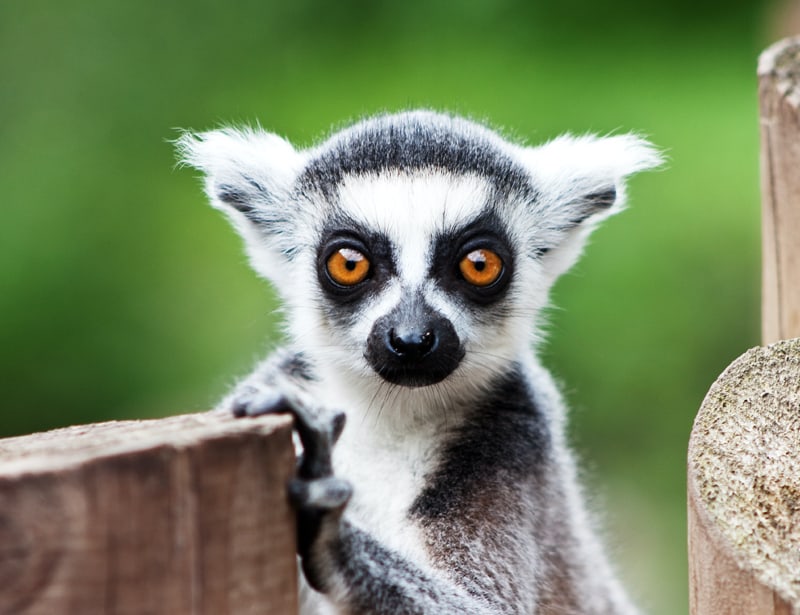
Intriguingly, lemurs have evolved the toothcomb or tooth scraper, a dental feature that consists of six forward-facing teeth on the lower jaw2. Moreover, lemur teeth are elongated, thin, and closely spaced. This physical adaptation is also vital to a lemur's life.
Firstly, lemurs groom themselves with their toothcomb. Second, their toothcomb helps them break loose tree bark and drink the sap. Lemurs also have a grooming claw in their upper jaw to clean their toothcomb.
3. Lemurs are "sun worshippers."
Sometimes, lemurs stretch their arms toward the early morning sunlight penetrating the dense canopy of Madagascar rainforests, a phenomenon called "sun-worshipping."
Lemurs spread their arms to reveal more of their skin, exposing more of their bodies to the sunlight. Since lemurs are ectothermic, they rely on the environment, like the sun, to regulate their body temperature. Besides keeping them comfortable, sunlight gives lemurs energy to perform the day's activities.
However, lemurs extend their sun-worshipping on colder days to ensure they receive enough sunlight. Various lemur species, including ring-tailed lemurs and sifakas, exhibit this behavior.
4. Smarter lemurs are more popular.
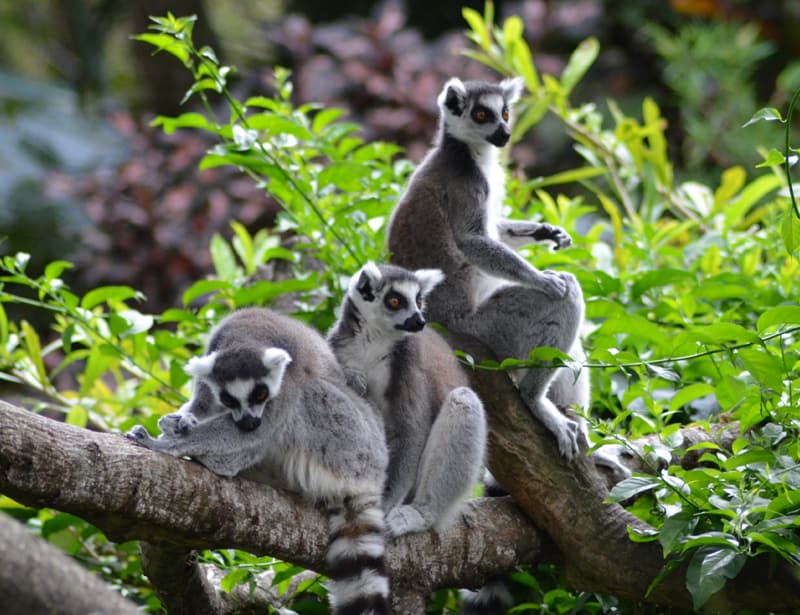
A Duke University study found that lemurs with advanced problem-solving skills were more popular in their social group. Those lemurs who found food, overcame obstacles, or manipulated objects became popular with other lemurs.
Smarter lemurs enjoyed an increased frequency of grooming and touching. The research suggests that the more a lemur masters a specific skill, the more attention it receives from its peers7.
5. Red-fronted lemurs use millipedes as insect repellant.
When red-fronted lemurs self-medicate, they look for millipedes. Chewing on the millipedes triggers the release of a bright orange paste that naturally repels mosquitoes. Furthermore, lemurs apply the paste on their genital area to remove or protect themselves from parasites1. Despite getting chewed on, the millipedes remain unharmed.
6. Female lemurs mate for only a few days a year.
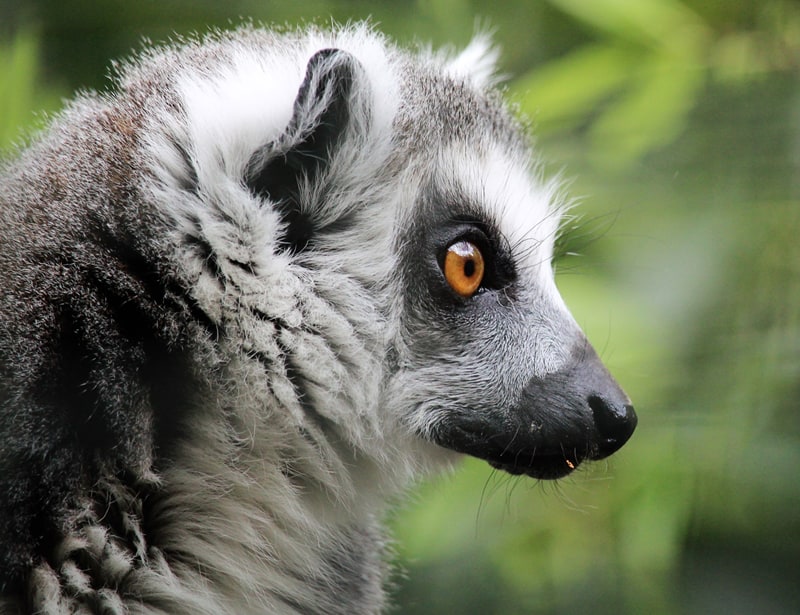
During the breeding season, a few days between May and July, female lemurs become active and change their behavior. Likewise, the male lemurs perform a mating dance against other males, hoping to attract a mate. This short but frantic mating period might be an adaptation to Madagascar's unpredictable weather, ensuring that baby lemurs arrive when food is abundant.
7. Female lemurs run their world.
Unlike most animals, including most primates, female lemurs dominate lemur society. They lead their group, called a "conspiracy," around the dense forests of Madagascar and decide when to move to another area. Additionally, females always eat first, and males must wait for their turn.
Moreover, female lemurs make the final call in selecting a mate; a male's size and strength ultimately do not matter in the selection process. Their choice also sets the direction for the rest of the group. In the world of lemurs, female dominance sets the tone and pace everybody else must follow.
8. Ring-tailed lemurs hold "stink fights."
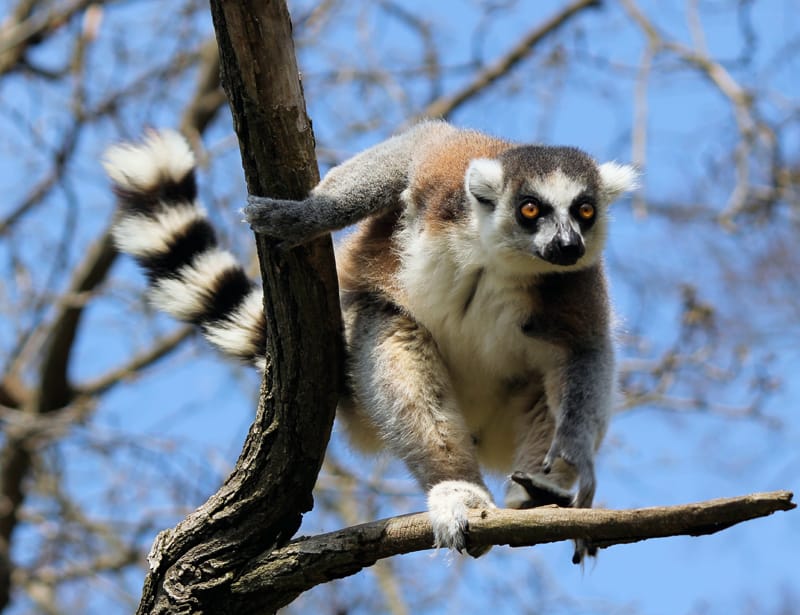
Unlike many animals, ring-tailed lemurs engage in "stink fights" instead of violent confrontations5. As a result, conflict resolution for these lemurs does not rely on physical strength but on the strength of the lemurs' scent.
Male ring-tailed lemurs usually engage in stink fighting; their wrists have scent glands that emit an intense but fleeting odor, while the scent glands on their shoulders secrete a thick, long-lasting substance.
The Duk Lemur Center has observed ring-tailed lemurs using these non-violent tactics, finding that males use their powerful scents to intimidate their opponents. How do they do it? A male ring-tailed lemur drags its tail across its scent glands, soaking it in the musk, and waves them in the air.
Moreover, this behavior does not harm their rivals but scares them away with their "stink power." The center also found that lemurs cleverly combine different smells to unleash the most potent combination of stink.
9. Indri lemurs are the only lemurs that sing.
The size of lemurs varies dramatically across species, from the petite Mouse Lemurs weighing only around 30 grams to the larger Indri that can weigh up to 9.5 kilograms.
Indri lemurs live in the forest canopy of eastern Madagascar and are the only primates that sing. Both male and female lemurs produce melodic vocalizations that fill the entire forest, their way of communicating and uniting their group3.
When these lemurs sing, their songs resound throughout the forest. Moreover, they can harmonize and form a chorus, strengthening their bonds and scaring off potential threats4.
The Indri lemurs' songs can also last 45 seconds to over three minutes. You can also hear them from two kilometers away.
10. Lemurs are the world's most endangered group of mammals.
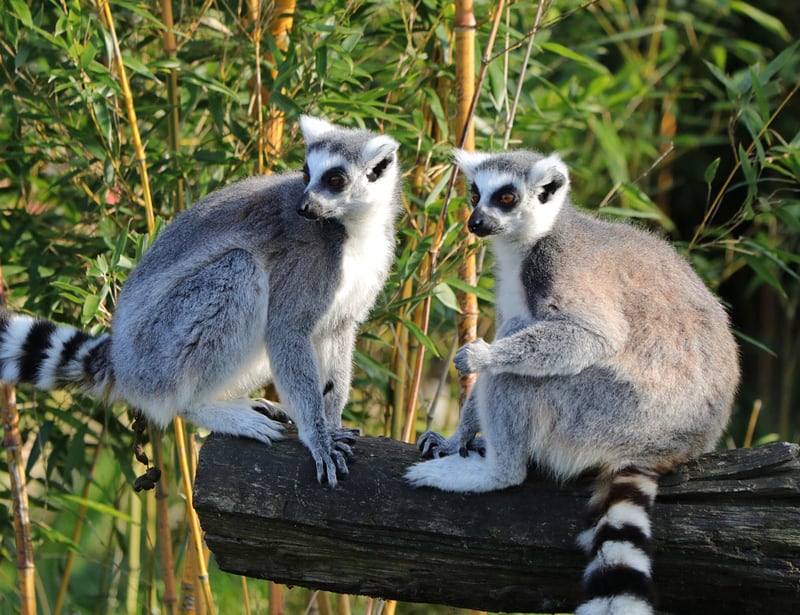
Sadly, 94% of living lemurs in Madagascar are in danger of potential extinction, according to the International Union for Conservation of Nature (IUCN). The main culprit in their possible demise is rampant and massive deforestation, causing extreme habitat loss6.
Severe habitat destruction reduces lemurs' food supply and erases secure nesting areas. Moreover, it fragments lemur habitats, isolating or stranding small lemur families. One terrible situation has led to another, triggering a chain reaction that has brought these endangered species to the brink of extinction.
There is still time to save lemurs, but we must act quickly. Protecting lemurs requires cooperation and collaboration between the native Malagasy people and the concerned organizations.
What are your favorite facts about lemurs? Remember to share it with your friends!
Related: To further explore the animal kingdom, check out some of the other animals that start with L.
| 1 |
Peckre, L., Defolie, C., Kappeler, P. M., & Fichtel, C. (2018). Potential self-medication using millipede secretions in red-fronted lemurs: combining anointment and ingestion for a joint action against gastrointestinal parasites? Primates, 59(5), 483-494. |
| 2 |
Cuozzo, F. P., & Sauther, M. L. (2006). Severe wear and tooth loss in wild ring-tailed lemurs (Lemur catta): A function of feeding ecology, dental structure, and individual life history. Journal of Human Evolution, 51(5), 490-505. |
| 3 |
Gamba, M., Torti, V., Estienne, V., Randrianarison, R. M., Valente, D., Rovara, P., ... & Giacoma, C. (2016). The Indris Have Got Rhythm! Timing and Pitch Variation of a Primate Song Examined between Sexes and Age Classes. Frontiers in Neuroscience, 10, 249. |
| 4 |
Gamba, M., Torti, V., Estienne, V., Randrianarison, R. M., Valente, D., Rovara, P., ... & Giacoma, C. (2016). The Indris Have Got Rhythm! Timing and Pitch Variation of a Primate Song Examined between Sexes and Age Classes. Frontiers in Neuroscience, 10, 249. |
| 5 |
Scordato, E. S., & Drea, C. M. (2007). Scents and sensibility: information content of olfactory signals in the ringtailed lemur, Lemur catta. Animal Behaviour, 73(2), 301-314. |
| 6 |
Schwitzer, C., Mittermeier, R. A., Johnson, S. E., Donati, G., Irwin, M., Peacock, H., ... & Wright, P. C. (2014). Averting lemur extinctions amid Madagascar's political crisis. Science, 343(6173), 842-843. |
| 7 |
Kendal, R. L., Custance, D. M., Kendal, J. R., Vale, G., Stoinski, T. S., Rakotomalala, N. L., & Rasamimanana, H. (2010). Evidence for social learning in wild lemurs (Lemur catta). Learning & Behavior, 38(3), 220–234. |
| 8 |
Mittermeier, R. A., Louis, E. E., Richardson, M., Schwitzer, C., Langrand, O., Rylands, A. B., ... & Hawkins, F. (2010). Lemurs of Madagascar. Conservation International |
Mike is a degree-qualified researcher and writer passionate about increasing global awareness about climate change and encouraging people to act collectively in resolving these issues.
Fact Checked By:
Chinny Verana, BSc.

